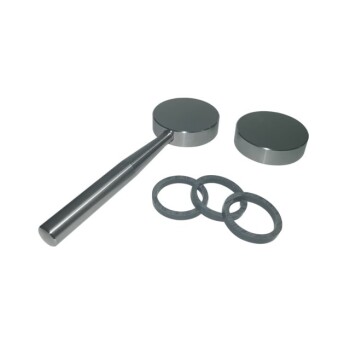XRF machines, especially handheld XRF analyzers, are generally safe when used correctly.
They emit radiation similar to that of medical X-rays.
However, precautions must be taken to ensure safety.
Key factors in maintaining safety include proper handling, calibration, and maintenance of the equipment.
Adherence to radiation safety protocols is also crucial.
Operators should be trained and should avoid common mistakes such as improper sample preparation and insufficient measurement times.
Protective measures and regular instrument adjustments are also crucial to ensure the accuracy and safety of XRF analysis.
4 Essential Safety Tips for Non-Professionals

1. Nature of XRF Radiation
XRF machines emit radiation similar to medical X-rays, which is a form of ionizing radiation.
While this radiation is generally low, it still requires careful handling to prevent exposure to operators and bystanders.
2. Safety Measures
Directing the Beam: Always point the handheld XRF analyzer directly at the sample and never at people or body parts.
Distance and Time: Minimize exposure by limiting the time of exposure and maintaining a safe distance from the source.
Shielding: Use appropriate shielding and accessories to protect operators and others from radiation.
3. Operational Best Practices
Training: Provide radiation safety training to operators to ensure they understand how to use the equipment safely.
Calibration and Maintenance: Regularly calibrate the instrument and maintain it according to the manufacturer's guidelines to ensure accurate and safe operation.
Sample Preparation: Proper sample preparation is crucial to avoid inaccuracies and ensure the safety of the analysis process.
4. Common Mistakes to Avoid
Improper Sample Preparation: Cleaning and preparing samples correctly can prevent contamination and inaccurate readings.
Insufficient Measurement Time: Ensuring adequate measurement time improves accuracy and reduces the need for repeated exposures.
Failure to Replace Protective Components: Regularly replacing protective boxes and filters helps maintain accurate readings and protects the instrument from damage.
Environmental Considerations
Stable Environment: Operate the XRF analyzer in a stable, controlled environment to prevent environmental factors from affecting the instrument's performance and accuracy.
Power Supply: Use a stable power supply or install a line conditioner to prevent electrical fluctuations from affecting the instrument.
By following these guidelines and best practices, the use of XRF machines can be safe and effective for various analytical applications.
It is essential for operators to be well-trained and for the equipment to be properly maintained and calibrated to ensure both accuracy and safety.
Continue exploring, consult our experts
Unlock the full potential of your analytical lab with KINTEK SOLUTION's cutting-edge XRF machines.
Safeguard your precision and protect your operators by adhering to industry best practices outlined in this article.
Ready to elevate your lab's efficiency?
Reach out to us today and discover how our expert training, calibration, and top-tier support can ensure your XRF analysis is both accurate and secure.
Your success story starts here—contact KINTEK SOLUTION now!















